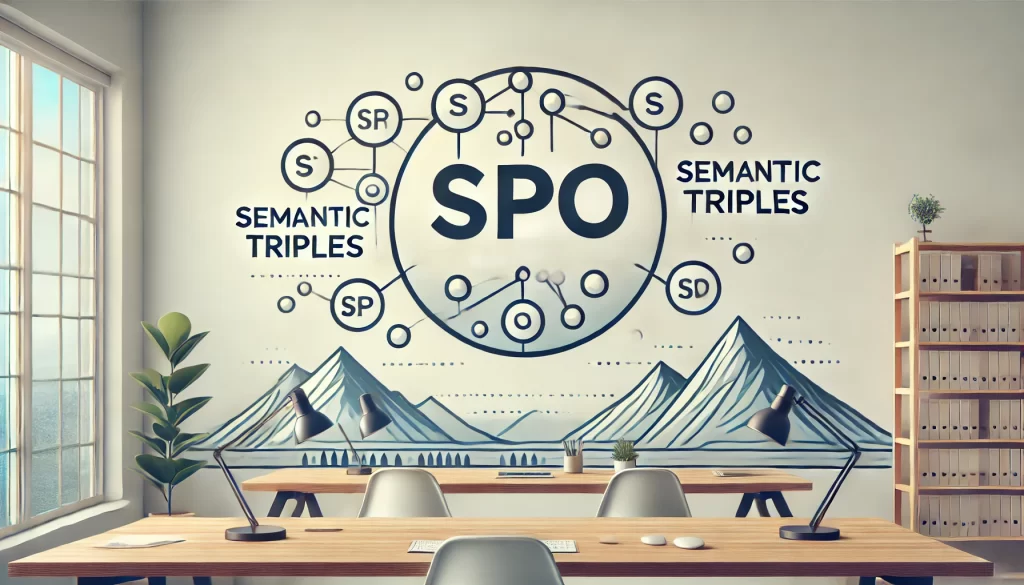
How To Create A Topical Map
A topical map is a powerful tool for visually organizing and representing information on a specific topic.
In this article, we will explore the concept of topical maps, their significance, and how to create them effectively.
We’ll delve into the step-by-step process of creating a topical map, including identifying the main topic, brainstorming related subtopics, organizing them into categories, determining their hierarchy, and visually representing the information.
We’ll discuss the different types of topical maps, such as bubble maps, tree maps, flowcharts, and mind maps, and provide tips for creating an impactful and clear topical map.
Whether you’re a student, professional, or enthusiast, understanding and mastering the art of topical mapping can greatly enhance your ability to comprehend and communicate complex information.
Alternatively If you’re looking for a step-by-step guide, check out Topical Map by Kasra Dash for comprehensive insights and expert advice.
Contents
- What Is a Topical Map?
- Why Is a Topical Map Useful?
- How to Create a Topical Map?
- What Are the Different Types of Topical Maps?
- What Are Some Tips for Creating an Effective Topical Map?
- Frequently Asked Questions
- What is a topical map and why would I need to create one?
- How do I choose the best data to include in my topical map?
- Are there any software programs or tools that can help me create a topical map?
- What are some tips for designing an effective topical map?
- Can I create a topical map without any prior mapping experience?
- How can I ensure the accuracy of my topical map?
- Content Related Blogs
What Is a Topical Map?
A topical map is a visual representation of the interconnected topics and subtopics within a specific subject area, designed to enhance content organization, search engine visibility, and user engagement.
It serves as a navigational tool that showcases the authoritative structure of content and its relevance to search intent and user needs.
The concept of a topical map is integral to SEO strategies, as it allows websites to present a well-structured content hierarchy to search engines, which in turn boosts their visibility and ranking.
By categorizing content into distinct topics and subtopics, it helps search engines understand the semantic relationships between different pieces of information, thereby establishing the website’s authority in its field.
From a user perspective, a topical map facilitates seamless navigation, enabling visitors to access relevant content with ease.
This, in turn, enhances the user experience by providing a clear pathway to explore the comprehensive range of topics offered by the website.
Why Is a Topical Map Useful?
A topical map is immensely useful as it enables websites to cluster related content, establish semantic relationships between topics, and optimize internal linking for enhanced search engine visibility, keyword targeting, and organic traffic generation.
It enhances content relevance and fosters a holistic SEO approach by aligning with Google’s Knowledge Graph.
In the realm of SEO and content optimization, topical maps play a vital role in guiding search engines to understand the structure and significance of different topics within the website.
By strategically organizing content into clusters through topical maps, websites can effectively signal to search engines the relevance and interconnectedness of the various topics they cover.
This approach facilitates search engines in deciphering the overarching themes of the website and helps in establishing a clear hierarchy of content.
One of the significant benefits of employing topical maps is the improvement in keyword targeting. Through the structured organization of content, websites can better align specific keywords with relevant clusters, thus providing more context and depth to the targeted keywords.
Internal linking, a core component of SEO, is also amplified through the use of topical maps.
By mapping out the semantic relationships between topics, websites can create a more cohesive internal linking framework, which not only aids in navigation for users but also enhances the visibility of related content to search engine crawlers.
The implementation of topical maps contributes to fostering content relevance. By closely linking related topics, websites can better demonstrate their authority and expertise within their niche, thereby enhancing the overall user experience and engagement.
The collaborative effect of enhanced keyword targeting, improved internal linking, and heightened content relevance ultimately leads to a substantial increase in organic traffic, as search engines recognize the website as a valuable and comprehensive source of information on a particular topic.
How to Create a Topical Map?
Creating a topical map involves a structured process that begins with identifying the main topic, brainstorming related subtopics, organizing them into categories, determining their hierarchy, and ultimately visualizing the interconnectedness through a comprehensive representation.
It is a fundamental aspect of content mapping and holistic SEO approach that aims to boost website visibility, authority on specific topics, and user engagement.
Developing a topical map starts with thorough research using tools like Google Keyword Planner to identify high-potential topics and relevant subtopics for a website. Once the central theme is defined, the next step is to conduct a detailed analysis of related keywords, long-tail phrases, and semantic associations to flesh out the subtopics.
The categorization process follows, aligning the subtopics based on their relevance and establishing a clear hierarchical structure. This segmentation further aids in optimizing the website’s architecture for topical authority and improved search engine recognition.
Identify the Main Topic
The primary step in creating a topical map is to identify the main topic that serves as the focal point for exploring related subtopics. It involves leveraging semantic SEO techniques, understanding the target audience’s search intent, and aligning with the Knowledge Graph to ensure content resonance with user queries and digital marketers’ strategic objectives.
Once the main topic is identified, digital marketers can use various tools and platforms to conduct in-depth keyword research and analyze user search behavior.
By understanding the language and context that users use in their queries, semantic SEO enables content creators to develop a comprehensive understanding of the topics and subtopics. This in turn allows them to optimize content not just for specific keywords, but also for the underlying concepts and entities connected to the main topic.
Aligning with the Google Knowledge Graph establishes the authority and relevance of the content, as it presents information in a structured and interconnected manner, aligning with the way users perceive and seek information. This approach not only enhances visibility but also improves the overall user experience, making it more likely for the content to be positioned prominently in search results, reaching the intended audience effectively.
Brainstorm Related Subtopics
After identifying the main topic, the next step involves brainstorming related subtopics by leveraging tools such as Google Ads, AlsoAsked, and AnswerThePublic to uncover popular search queries, user search intent, and content clusters. This process fosters the expansion of the topical map and the creation of comprehensive content clusters aligned with user needs and preferences.
By utilizing the strength of Google Ads, one can dive into the data trends to identify valuable search queries and user interests. Meanwhile, AlsoAsked and AnswerThePublic provide a wealth of information representing user questions and search intents. These tools enable content creators to glean valuable insights into the language, terms, and phrases that users commonly employ, thereby helping structure content that resonates with their needs.
The integration of relevant keywords and entities into the content enhances its strategic approach, ensuring that it aligns with user intent and ranks organically in search engine results.
Organize Subtopics into Categories
Once the related subtopics are identified, the next step involves organizing them into logical categories based on thematic, semantic, or contextual relationships.
This strategic organization ensures that the content pillars are properly established, providing a solid foundation for comprehensive coverage. It allows for the identification of backlink opportunities to enhance the content’s authority and visibility. By aligning the subtopics with the topical authority in the niche, the content gains credibility and relevance, both for the target audience and search engines such as Google. This meticulous approach not only enriches the user experience but also strengthens the overall content strategy.
Determine the Hierarchy of Subtopics
Determining the hierarchy of subtopics entails establishing a structured framework that reflects the interrelationship and significance of each subtopic within the topical map. It involves considering the crawlability by search engine crawlers, optimizing for the Google Knowledge Graph, and ensuring that the content hierarchy aligns with user search behavior and expectations.
Determining the hierarchy of subtopics is crucial for organizing content in a way that is easily accessible to search engine crawlers, which enables them to understand the relationships between different subtopics. This understanding is essential for Google Knowledge Graph optimization, as it helps in presenting information in a structured and linked manner, enriching search results with relevant and accurate information.
A well-structured hierarchy engages users by presenting content in a logical and easy-to-navigate manner, aligning with their search behavior and providing a seamless browsing experience. By focusing on user-centric content hierarchy, we can enhance user satisfaction and increase the relevance of our content in search engine results.
Create a Visual Representation
The final step in creating a topical map involves transforming the organized subtopics and their hierarchy into a visual representation that aligns with search engine optimization goals, enhances website visibility, and conveys topical authority. This visual aid serves as a navigational and organizational tool for both content creators and users, offering a holistic view of the interconnected topics and subtopics within the subject area.
By converting the structured information into a visual format, such as infographics, charts, or diagrams, web content becomes more accessible and appealing to users, thereby contributing to website visibility. These visual representations play a crucial role in SEO by enabling search engines to understand the topical relationships and relevance of the content. When included within web pages, visual aids contribute to enriching the context of the information, potentially enhancing the chances of being featured in the Google Knowledge Graph.
As search engines continue to prioritize user experience and relevance, integrating visually appealing elements into website content is becoming increasingly important for establishing topical authority and improving organic search rankings.
What Are the Different Types of Topical Maps?
Topical maps can take various forms, including bubble maps, tree maps, flowcharts, and mind maps, each offering unique visual representations that cater to specific content organization, navigational, and user engagement preferences. These diverse types of topical maps provide flexibility in showcasing the interconnectedness of topics and subtopics within a subject area.
Bubble maps, for instance, use bubbles or circles of different sizes to represent data, with the size of the bubble indicating the magnitude of the topic or subtopic. On the other hand, tree maps organize hierarchical data through a series of nested rectangles, offering a visual portrayal of proportions and relative sizes of the topics.
Flowcharts are ideal for illustrating processes and sequences, using shapes and arrows to depict the flow of information. Meanwhile, mind maps, with their central topic connected to subtopics through branches, enable intuitive exploration of interconnected concepts.
Bubble Map
A bubble map presents topics and subtopics in a circular arrangement, with the size of the bubbles conveying the relative importance or hierarchical significance of each topic. This visual representation aligns with semantic SEO principles and provides a user-friendly navigational experience, catering to the visual preferences of digital marketers and users searching for comprehensive content coverage.
By visually organizing information, bubble maps offer a quick understanding of the relationships between various topics and subtopics, making it an effective tool in digital marketing strategies for comprehensive content planning and topical mapping. The intuitive design of bubble maps enhances user engagement by allowing them to explore interconnected themes effortlessly. These visual representations not only aid in optimizing SEO by providing a clear structure to search engines but also contribute to better user-friendly navigation on websites.
The use of bubble maps in digital content can elevate the overall quality of information architecture by presenting complex information in a visually digestible format, driving enhanced interaction and understanding of the subject matter.
Tree Map
A tree map visually represents topics and subtopics in a hierarchical, branching structure, providing a clear and organized depiction of content clusters, thematic relationships, and topical authority. It aligns with Ahrefs’ content clustering approach and reinforces the principles of effective search engine optimization through comprehensive topical mapping.
By displaying the content clusters in a visual format, the tree map facilitates a deeper understanding of the thematic relationships among different topics, making it an invaluable tool for content creators and SEO strategists.
The hierarchical structure of the tree map enables easy identification of the main themes or pillars of content, which is in sync with the content cluster methodology advocated by Ahrefs for improving SEO performance.
The clear depiction of subtopics within each main topic emphasizes the interrelated nature of content, guiding the development of comprehensive and interconnected content clusters that enhance topical authority and keyword relevance.
Flowchart
A flowchart serves as a sequential visual representation of interconnected topics and subtopics, offering a structured navigational guide that enhances website visibility and supports search engine optimization goals. It provides a systematic breakdown of content hierarchy and navigational pathways, catering to user engagement and search intent.
By visually organizing website content, a flowchart assists in establishing a clear content hierarchy that search engines can easily comprehend, thus contributing to improved SEO. It aids in identifying potential gaps or redundancies in website content, enabling businesses to refine their content strategy and ensure comprehensive coverage of relevant topics.
Mind Map
A mind map presents topics and subtopics in a radial, interconnected structure, catering to diverse search intents, user preferences, and semantic associations. It aligns with Google Keyword Planner’s search intent analysis and fosters alignment with the Google Knowledge Graph, offering a comprehensive and user-centric navigational tool for exploring content relationships and semantic connections.
By visually organizing information, mind maps enable users to grasp the interrelationships between various concepts, enhancing comprehension and retention. This not only aids in brainstorming and idea generation but also supports decision-making processes.
The interconnectivity of topics and subtopics in a mind map facilitates intuitive exploration, aligning with user-centric navigation patterns. It simplifies content discovery and retrieval while addressing users’ intent in accessing specific information.
With its emphasis on semantic associations, a mind map provides valuable insights into the context and relevance of various content elements, making it a powerful tool for optimizing content for search engines and user engagement.
What Are Some Tips for Creating an Effective Topical Map?
When creating an effective topical map, it is essential to integrate keywords and phrases strategically, ensuring content relevance and alignment with user search intent. Using color and visual aids enhances the map’s clarity and user engagement, fostering a user-friendly experience that aligns with the Google Knowledge Graph’s emphasis on user-centric content presentation.
By incorporating relevant keywords and entities throughout the topical map, you not only improve its search engine optimization but also reinforce the map’s alignment with user search queries and the Google Knowledge Graph.
Utilizing different colors and visual elements for distinct sections or themes within the map can aid users in navigating seamlessly, drawing their attention to essential information and maintaining their engagement. It is important to strive for a balanced visual representation, avoiding excessive clutter while ensuring that the map effectively communicates the breadth and depth of the topic at hand.
Clear labeling and concise content snippets within the map improve user understanding, further contributing to a positive user experience and potentially higher search rankings.
Use Keywords and Phrases
Utilizing relevant keywords and phrases in the topical map enhances content relevance, supports keyword targeting for organic traffic generation, and aligns with user search intent. It involves leveraging insights from the Google Keyword Planner, understanding user queries, and strategically integrating keywords to enhance the map’s visibility and resonance with search intent.
Integrating keyword targeting within topical maps is a crucial element of an effective SEO strategy. By identifying and incorporating high-traffic keywords into the map, content creators can boost their chances of ranking higher in search engine results. In addition, aligning these keywords with user search intent not only provides valuable information but also enhances the overall user experience.
The utilization of relevant keywords in the topical map achieves a delicate balance: it thrives on content visibility while maintaining a genuine connection with user queries.
Keep it Simple and Clear
Maintaining simplicity and clarity in the topical map design enhances user engagement, facilitates navigational ease, and supports website visibility. By ensuring a user-friendly visual presentation, the map fosters a clear understanding of content relationships, thematic connections, and topical hierarchy, catering to diverse user preferences and information consumption patterns.
This approach not only enriches the user experience but also aligns with the cognitive processes of information retrieval and comprehension. User engagement is further bolstered by the intuitive interaction with the map, enabling seamless exploration of interconnected topics and easy access to relevant information.
Clear topical map design contributes to improved website visibility by enhancing the navigation experience, prompting longer visitor durations and increased interaction with the site’s content.
Use Color and Visual Aids
Incorporating color and visual aids in the topical map enhances user experience, reinforces content hierarchy, and aligns with the user-centric approach emphasized by the Google Knowledge Graph. It offers a visually appealing and engaging navigational tool that facilitates content exploration, comprehension, and thematic understanding, catering to diverse user preferences and learning styles.
By employing a color-coded scheme, differentiating between various categories, and using visual cues, users can easily discern the relationships and connections between topics and subtopics, thus honing in on their specific areas of interest. The strategic use of visual elements contributes to the creation of a memorable user experience. Human psychology corroborates the fact that well-thought-out color schemes and compelling visual aids not only attract attention but also significantly enhance recollection and comprehension, resulting in more engaging and effective learning and information retention.
The integration of color psychology and visual storytelling techniques within the topical map can also influence users’ emotions and perceptions, creating a more immersive and meaningful interaction with the content.
Review and Revise as Needed
Regularly reviewing and revising the topical map ensures its alignment with evolving content needs, search engine algorithms, and user engagement metrics. It supports website visibility, content mapping strategies, and search engine optimization efforts by adapting to emerging trends, user preferences, and topical relevance, fostering a dynamic and adaptable navigational tool for content exploration.
By incorporating relevant keywords and entities related to content mapping and SEO, the topical map can be optimized for enhanced visibility and user accessibility. This strategic focus on continuous improvement aligns with the dynamic nature of online content and the need to stay competitive in search engine rankings.
When the map is in tune with effective SEO strategies, it serves as a valuable asset for driving targeted traffic and improving the overall user experience. With regular revision and recalibration, the topical map can evolve in parallel with the shifting digital landscape, positioning the website for sustained success.”
Frequently Asked Questions
What is a topical map and why would I need to create one?
A topical map is a type of visual representation that displays data or information related to a specific topic or theme. It can be useful for understanding geographic patterns, trends, and relationships. You may need to create a topical map for a project, presentation, or to gain a better understanding of a particular subject.
How do I choose the best data to include in my topical map?
The data you choose to include in your topical map will depend on the purpose and scope of your project. Consider the key aspects of your chosen topic and select data that will effectively convey the information you want to communicate. You can use a variety of sources such as census data, surveys, or existing maps.
Are there any software programs or tools that can help me create a topical map?
Yes, there are several software programs and online tools available that can assist you in creating a topical map. Some popular options include ArcGIS, QGIS, and Tableau. These programs offer a variety of features to help you visualize and customize your map.
What are some tips for designing an effective topical map?
When designing your topical map, it’s important to consider the audience and purpose of the map. Use clear and concise labeling, choose appropriate colors and symbols, and ensure the map is easy to read and understand. You can also include a legend or key to explain any complex data or symbols.
Can I create a topical map without any prior mapping experience?
Yes, you can create a topical map even if you have no prior mapping experience. Many software programs offer user-friendly interfaces with tutorials and guides to help beginners. You can also find online resources and tutorials that can teach you the basics of creating a topical map.
How can I ensure the accuracy of my topical map?
To ensure the accuracy of your topical map, it’s important to carefully select and verify your data sources. Double-check your data entries and make sure they align with the chosen geographic boundaries. You can also seek feedback from others or consult with a professional cartographer for further validation.
Content Related Blogs
Here are a list of other content related articles:
- AI Content Detection

- AI Copywriting Software

- Autoblogging AI Review

- Bolded Keywords in Google SERP

- Content Cannibalisation Google Penalty

- Content Expansion

- Focus Keyphrase

- How To Create A Topical Map

- Identify The Root, Rare, and Unique Attributes Of An Entity

- Page Optimizer Pro

- Semantic Triples

- SEO Avalanche Technique

- SEO Content Audit Guide

- SEO Content Optimization Tools

- Silo Internal Linking

- Standalone Content


About FatRank
Our aim to explain and educate from a basic level to an advanced on SEO and Social Media Marketing.
